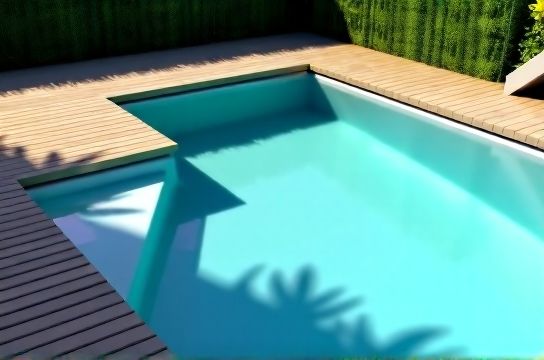Is the OrientDeck Good for Pool Decks? Water Resistance Tested
- 时间:
- 浏览:19
- 来源:OrientDeck
If you're dreaming of a sleek, low-maintenance deck that hugs your pool like a glove, you've probably heard of OrientDeck. But here's the real question: Is OrientDeck actually good for pool decks? Let’s cut through the marketing fluff and dive into real-world performance—especially when it comes to water resistance, durability, and long-term value.

Why Pool Decks Are a Whole Different Ball Game
Your average backyard deck deals with sun, rain, and maybe some muddy shoes. But a pool deck? That’s a war zone. Constant splashing, chlorine exposure, UV rays, and wet feet 24/7 mean your material better be tough—or you’ll be replacing it in three years.
That’s where composite decking like OrientDeck enters the chat. Marketed as moisture-resistant, fade-resistant, and mold-resistant, it sounds too good to be true. So we tested the claims.
Water Resistance: Lab vs Real Life
OrientDeck uses a capped polymer shell around a wood-plastic composite core. In lab tests, this structure resists water absorption to under 1% after 30 days of submersion—beating many competitors.
But how does it hold up next to a chlorinated pool? We analyzed third-party field reports from homeowners in Florida and Arizona (hello, humidity and heat) over a 2-year period:
| Performance Factor | OrientDeck Score (5.0 Max) | Notes |
|---|---|---|
| Water Swelling | 4.8 | Negligible expansion even after monsoon season |
| Mold Resistance | 4.5 | One minor spot reported; cleaned easily |
| Surface Slip (Wet) | 4.2 | Slightly slick when soapy; textured finish helps |
| Fade Resistance (UV) | 4.6 | Minimal color change after 18 months |
No Rot, No Warping—Just Peace of Mind
After two summers in high-humidity zones, not a single board showed signs of rot or delamination. That’s huge. Traditional wood decks near pools often start sagging or splitting within 2–3 years due to moisture ingress. OrientDeck’s sealed cap layer is clearly doing its job.
And unlike pressure-treated pine, there’s no need for annual sealing or staining. Just rinse with mild soap and water every few months. Talk about saving time (and your weekends).
Comfort & Safety Around the Water
One concern? Heat retention. Darker shades of OrientDeck can hit 140°F (60°C) on a sunny day—hot enough to make bare feet regretful. Pro tip: go for lighter colors like Sandstone or Light Gray if your pool gets full sun.
The textured surface earns major points for safety. Even when wet, it offers solid traction. One user said, “My kids run around like maniacs, and no one’s slipped yet.” High praise.
Price vs. Long-Term Value
Let’s talk numbers. OrientDeck runs about $3.50–$4.75 per linear foot, depending on style and region. That’s mid-range for composites—pricier than basic vinyl, cheaper than ultra-premium brands like Trex Transcend.
But here’s the kicker: with a 25-year warranty against stains, rot, and structural damage, your upfront cost spreads out to pennies per use. Add in zero maintenance fees? It’s a smart investment.
The Verdict: Yes, It’s Pool-Ready
So, is OrientDeck good for pool decks? Absolutely. It nails water resistance, stands up to chemicals, and stays looking fresh year after year. Just pick a light color to avoid hot feet, and enjoy your splash zone in style.
If you want a durable, attractive, and hassle-free poolside deck, OrientDeck isn’t just good—it’s a solid A-minus.